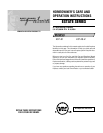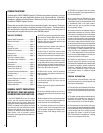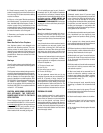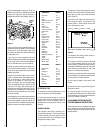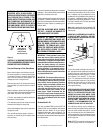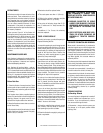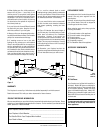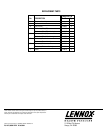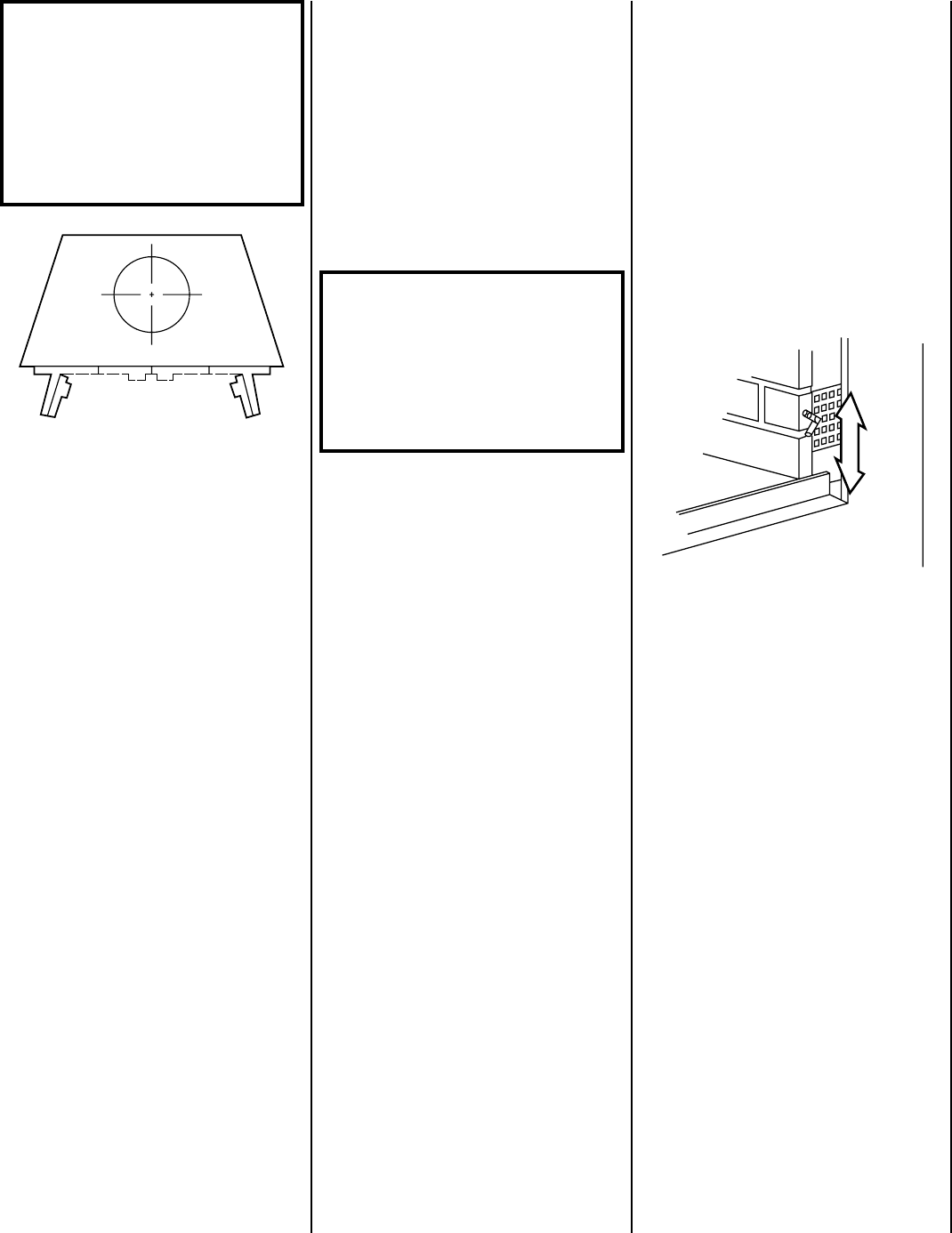
5
NOTE: DIAGRAMS & ILLUSTRATIONS NOT TO SCALE.
Glass Doors
Fully Open or
Fully Closed
(Bi-Fold Doors)
Figure 3
CAUTION: IF A SMOKING CONDITION EX-
ISTS, GLASS DOORS SHOULD BE CLOSED
DURING FIREPLACE OPERATION.
IMPORTANT: Plated polished brass glass
doors may have a plastic covering over all
brass pieces for protection during shipping
and handling. The plastic covering should be
removed before installation of the glass doors.
Under the plastic covering is a protective
lacquer coating which should not be removed.
In some instances, if it is removed, irrevers-
ible damage to the brass finish could occur.
Refer to the following for specific information
on plated polished brass.
IMPORTANT: The lacquer coating on the pol-
ished brass glass doors and trim pieces can
be damaged or removed causing corrosion
and/or tarnish. Do not remove the protective
lacquer coating from plated polished doors
and trim. To help protect the finish; use a
non-acidic wax and avoid the over-spray of
acidic/alkali based glass cleaners on the
brass pieces. Please understand that the
heat of the fire will cause the protective lac-
quer finish to slightly change to a light caramel
color. Do not be alarmed as this is a normal
occurrence.
Combustion Air Kit
You may use Model FOAK-4 with the EST-48
fireplace. Refer to the installation instructions
packed with each FOAK-4 air kit for specific
installation information, and see
Figure 4
. The
outside air kit, if used, must be installed before
the fireplace is totally framed and enclosed within
the finished walls.
Care and Cleaning of Your Glass Doors
Never clean the glass when the doors are hot.
Do not use ammonia or ammonia based glass
or household cleaner to clean the glass or the
door frame. An ammonia based cleaner will
damage the finish of the glass door.
Clean the glass doors by wiping with a damp
towel followed by a clean dry towel to remove
streaks.
Remove stubborn stains from the glass with a
mild soap solution and a towel dampened with
clean water. Dry with a clean dry towel.
• The fire must always be confined within the
boundaries of the fuel grate.
• The fireplace screens must always be closed
whenever the fireplace is being used.
• Never slam the glass door since it could cause
the glass to break.
• Do not build excessively large or hot fires —
scorching or discoloring of the plated brass
trim may occur.
WARNING: IF YOUR FIREPLACE IS
EQUIPPED WITH GLASS DOORS, IT
SHOULD BE OPERATED WITH THE DOORS
FULLY OPEN OR FULLY CLOSED. IF THE
DOORS ARE LEFT PARTIALLY OPEN, GAS
AND FLAMES MAY BE DRAWN OUT OF
THE OPENING, CREATING RISKS OF BOTH
FIRE AND SMOKE. REFER TO
FIGURE 3
FOR PROPER OPERATING CONDITIONS.
Figure 4
To provide outside combustion air to the fire-
box, operate the hand operated shut-off lever
located in the lower right side of the fireplace
opening behind the screen (
Figure 4
). To open
the air damper, turn upwards. To close, turn
down. The combustion air damper should be
fully open when the fireplace is in use, and fully
closed when the fireplace is not being used.
This will prevent the outside cold air from
entering the dwelling.
CAUTION: NEVER LOCATE AIR INLET WHERE
IT COULD BE BLOCKED BY SHRUBS, SNOW-
DRIFTS, ETC. NEVER LOCATE AIR INLET IN A
GARAGE OR IN ANY AREA WHERE THERE
ARE OTHER FUEL-BURNING APPLIANCES OR
PRODUCTS EMITTING COMBUSTIBLE GASES
SUCH AS PAINT, GASOLINE, ETC. IN COLD
CLIMATES, IT IS RECOMMENDED THAT THE
COMBUSTION AIR DUCT BE INSULATED.
The outside air ducting may be installed up-
wards through framing and ceiling joists with
the inlet hood installed through an outside
wall. Air ducting may also be installed down-
ward through floor joists and under the house
to a ventilated crawlspace not considered part
of the living area.
Note: DO NOT terminate the combustion air kit
in an attic space, under any circumstances.
OPEN
CLOSED
The combustion air kit provides for outside air to
be drawn into the firebox as an aid for combus-
tion. If installed, only one combustion air kit is
needed and it will be installed on the right top of
the fireplace. If additional length of air duct is
necessary, purchase locally available U.L. Class
0 or Class 1 metallic duct. The duct may extend
up to 50' in any direction.
Note: When installing the air duct vertically, DO
Not terminate the air duct closer than 3' below the
chimney top.
IMPORTANT: IN EXTREME COLD CLIMATES,
IT WOULD BE WISE TO INSTALL THE COM-
BUSTION AIR INLET HOOD BELOW THE LEVEL
OF THE FIREPLACE TOP.
• Extreme temperature changes can cause glass
breakage — do not build a hot fire and close the
glass doors if the doors are cold.
• If the tempered glass pane becomes scratched
or chipped, it creates a weakness in the glass
which can cause the glass to break when heated.
Replace the pane of glass by contacting your
nearest dealer.
CAUTION: GLASS AND METAL FRAMES
GET HOT — ALWAYS USE HANDLES TO
OPEN AND CLOSE THE DOORS.
WARNING: BE AWARE THAT SAFETY
GLASS IS UNPREDICTABLE WHEN HOT
AND MAY BREAK, EXPELLING HOT GLASS
INTO THE ROOM. ADVISE ALL FAMILY
MEMBERS TO REMAIN WELL AWAY
FROM THE FIREPLACE WHEN OPERAT-
ING WITH DOORS CLOSED TO AVOID
ANY POSSIBLE PERSONAL INJURY.



